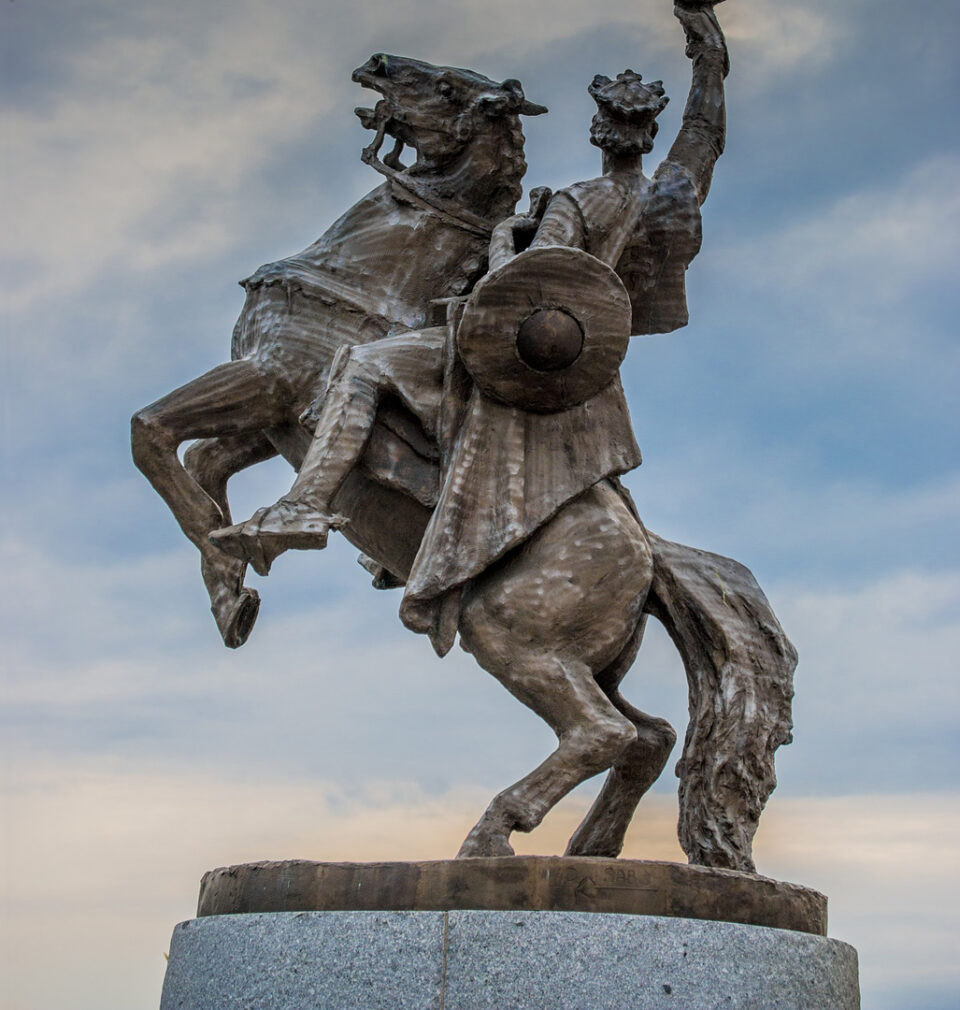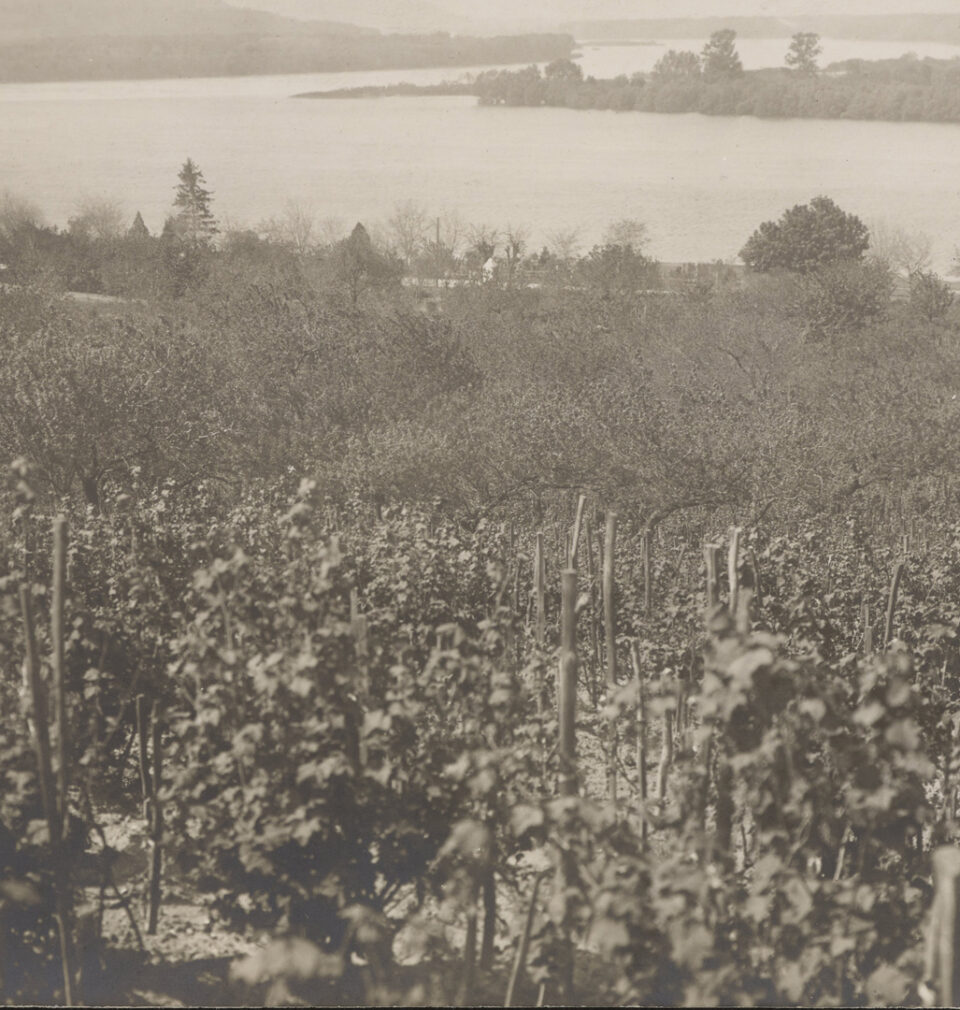
Słowacja - Slovensko - Slovakia
A Note From a Certain Meeting
Publication: 14 October 2021
TAGS FOR THE ARTICLE
TO THE LIST OF ARTICLESThe three monuments, of a totalitarian leader, a Habsburg monarch and a Slovak raiser of national awareness, originated in various circumstances but have one ambition in common: to reassess the image of the city.
When in early summer of 2012 a larger-than-life monument of Joseph Stalin appeared in the Slovak capital, it did not create much stir among the inhabitants. The first and only attack on the monument occurred a full month after its unveiling: an unknown culprit used red paint to give the statue its final appearance. This tepid response does not mean that the citizens of Bratislava have a special affection for totalitarianism (it is definitely not more passionate than in other Central European metropolises), on the contrary; attempts at excluding Bratislava from this story are equally strong as the tendency to forget, represented by the figure on the pedestal. The indifferent nature of the Bratislava citizens’ reaction has its source elsewhere: in their being accustomed to the fact that in this city statues live their own life. They appear and vanish or wander from place to place in search of a provisional site.
Of course Stalin’s monument did not appear in a prominent place in the capital by accident (although Bratislava statues travel a lot, they do so for quite different reasons). It is also certain that the initiators of this Great Comeback did not intend to create a place of memory where mourners could recollect the golden times of Soviet terror. The temporary presence of the monument in public space is a part of a project called Interrupted Song organised by the Slovak National Gallery, drawing a map of artistic practices from the period of socialist realism in the 1950s, that is the Stalinist era. The Gallery’s building is located in the corner of Ľudovít Štúr square, and the sculpture represents a kind of entering of public space by the exhibition. This action created a peculiar situation within the square: three different monuments compete for the pedestrian’s attention. Besides Stalin we have an equestrian statue of Maria Teresa and a monument to Ľudovít Štúr. A configuration which better reflects the essence of Bratislava’s history would be hard to find.
The three monuments, of a totalitarian leader, a Habsburg monarch and a Slovak raiser of national awareness, originated in various circumstances but have one ambition in common: to reassess the image of the city. Although history has made it even theoretically impossible for the three figures to meet in person, it is evident that when put in one space, they are eyeing and observing each other. This interaction is fascinating: Stalin with the red spots (to be removed shortly by a squad of restorers) is beaming at Štúr. We already know a little bit about this statue: it is part of the Slovak National Gallery’s large project and it could be said to work as a promotional advert. The original work stood elsewhere – on today’s Slovak National Rising Square in Bratislava. It was got rid off in 1956, which is reflected in the deep groove in the dictator’s neck left by the steel rope. And why is he glancing in such a way as if he wanted to cast a curse on Štúr? Does he know about the plans to remove him from the historic city centre to Liberty Square about a mile away?
A similar look at the national waker-up is cast from the other end of the square – from the Danube side. The looker is Maria Teresa. Although the queen is facing the river (meaning also Vienna, obviously) and is separated from the square itself by a busy riverside promenade, it is difficult not to detect a sense of injustice and determination in her expression. And no wonder: the centre of the square once belonged to her. Perhaps she had predicted that 90 years after March 1921, when the defenders of the Czecho-Slovak statehood dismantled the monument in such a humiliating way, it would reappear – albeit in a different state, in a smaller version and at the other end of the square? Her recent comeback, an effect of a private initiative (apparently known to the paint-stained Stalin, as can be deduced from his face), is intended at removing Štúr and his team from the former Coronation Square and returning the Hungarian ruler to the place she once occupied. The new statue (with evident facial surgery and modelled, as a Slovak art historian has aptly observed, more on the pictures of Princess Sissi on candy wrappers, rather than photographs of the original sculpture by János Fadrusz) was placed in the direct vicinity of the Štúrovcy, so that this juxtaposition provoked comparisons of the current square with its original function. Who knows – perhaps if political correctness did not deprive Maria Teresa of her two Hungarian guardsmen, she would more vocally insist on being reinstated to her old place.
And how is it all received by Ľudovít Štúr and his people? Eye contact with the two people who recently encroached on this space is evidently not making him happy. I understand him: right after the disappearance of the Czechoslovak lion – a fragment of the monument to Milan Rastislav Štefánik, which, like Maria Teresa now, once stood in his place (and was, of course, moved elsewhere) – from behind the corner his position is again threatened by history – this time the part represented by the Hungarian queen. Her statue looks innocent but undoubtedly has a confrontational nature – for why else would she have been placed in the very centre of his field of vision? There is no other reason: to question his double right to this space; the right he has claimed since the 1970s. (Why double? Because in addition to being on the prominent square he also appropriated its name.) Let us take another look at this configuration: the codifier of Slovak grammar stands with his friends in the centre of a historic square. Glancing at him is a Soviet dictator dragged out of a museum storage room and splashed with red paint, and a freshly cast Hungarian queen. Some could interpret this installation as a battle for heritage, for the right to History, fought in public space. Such a view has its justification: the period represented by the equestrian statue of Maria Teresa, the era when Bratislava was the coronation city for Hungarian monarchs, still functions as one of the two dominant historical narratives (the other is the image of the pre-war, the trilingual Prešpork[1]). The monument to Ľudovít Štúr represents the Slovak element of the history of Bratislava and constitutes an important point of resistance in the image of the city as the capital of an independent state. Such a confrontation could be currently interpreted as a struggle for the memory of the city expressed through an attempt at imposing a mandatory version of its History. When the queen and Štúrovcy fight a battle for eternity (in Bratislava eternity is an even more vague notion than in other cities), the immortal Stalin, looking at this spectacle with an almost invisible smirk, paradoxically reminds us that executing such a plan is impossible. The deep groove on his neck says it all.
This is why I perceive the peculiar life of the Bratislava monuments as a game: a game in which the city is more of a playing field than a semantic field. Thanks to its enracination in Grand History Bratislava encourages such a meaning. Attempts at enforcing it usually end in failure or, even worse, lead to forgetting. And not only because the historicising 19th-century practices are useless today. Neither the arrangement of the statues, nor the message they convey, or even their attitude towards the reality of the city but the very fact that they are constantly on the move reflects the essence of the city – its multi-historicity. In one of his essays the Slovak historian Ľubomír Lipták precisely described this movement but also gave it a name: a castling on pedestals. Developing this metaphor in the space of my city I can see that the network of meanings, information and interpretations is expressed here as a peculiar variant of chess: a game where it is the arrangement of players rather than figures that is changing.
Sometimes you get the impression that the monuments themselves are aware of it. On their faces you see that they are ready to make a move, as a castling order may come at any moment. So some have already mounted a horse, others are marching forward and yet others are sailing in boats. Milan Rastislav Štefánik, freshly cast and placed in the middle of the new central tourist district, has put on an airman’s helmet. Only the paint-splashed dictator in front of the National Gallery does not seem intent on going anywhere. But in his case it is obvious that he will leave here soon. And Maria Teresa will disappear from the promenade after the failed coup (and Ľudovít Štúr will defend his version of the city’s History). According to the unwritten law governing the movement of Bratislava statues, they will reappear some time in the future, with the same claims to ruling over a given site. This is how things are going in a city which is constantly creating itself. This is how things look in a city where Stalin, Maria Teresa and Ľudovít Štúr can meet on one square.
***
[1] Prešporok – the former name of the city, the name Bratislava became official in 1919 [editor’s note].
Copyright © Herito 2020



